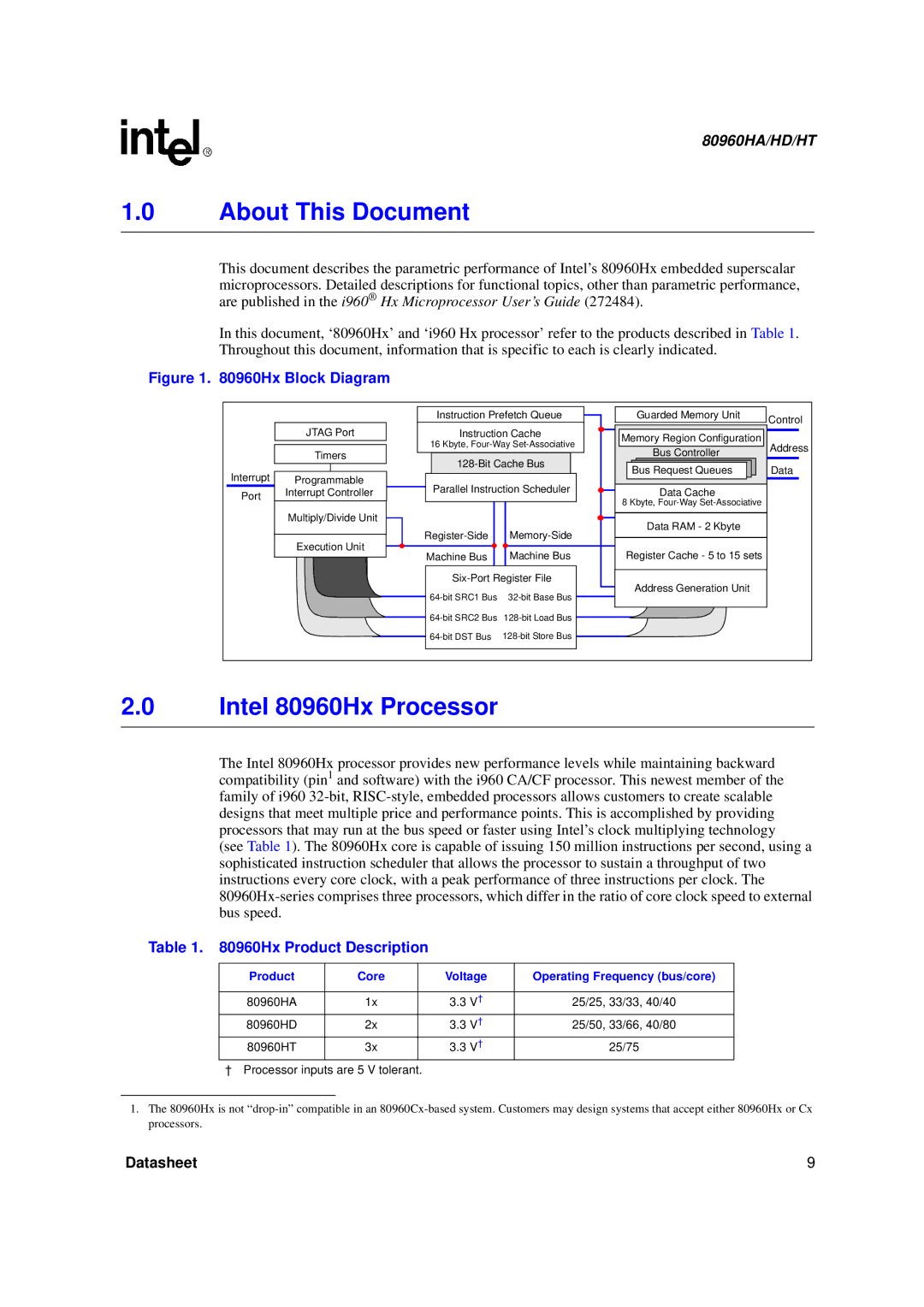80960HT, 80960HA, 80960HD specifications
The Intel 80960 family of microprocessors, introduced in the late 1980s, marked a significant evolution in the landscape of embedded systems and high-performance computing. The series included notable members such as the 80960HD, 80960HA, and 80960HT, each offering distinct features, technologies, and characteristics tailored for specific applications.The Intel 80960HD was primarily designed for high-performance applications, such as real-time processing and advanced embedded control systems. With a robust architecture, the 80960HD featured a 32-bit data bus and a 32-bit address bus, enabling it to access a larger memory space and providing superior performance for computational tasks. It included a sophisticated instruction set that facilitated efficient execution, particularly for computationally intensive tasks. The internal architecture also supported pipelining, allowing multiple instructions to be processed simultaneously, thus enhancing throughput.
The 80960HA variant was tailored for high-availability applications, making it ideal for embedded systems where reliability is paramount. This model incorporated features that emphasized fault tolerance and stability, ensuring that systems relying on it could maintain operational integrity even in the event of component failures. The 80960HA showcased enhanced error detection and correction capabilities, which contributed to its reputation as a dependable choice for mission-critical applications.
On the other hand, the 80960HT was designed to meet the needs of high-performance telecommunications and networking applications. Recognized for its ability to handle multiple tasks concurrently, the 80960HT included advanced features such as built-in support for multitasking and real-time processing. This made it an excellent fit for applications that demanded rapid data handling and processing, such as routers and switches in networking environments. Its architecture allowed for efficient context switching, ensuring that multiple processes could execute seamlessly.
All three variants utilized the same family architecture, enabling easy integration and compatibility across different applications. They also supported various memory management techniques, such as virtual memory and caching, enhancing their performance in diverse operating conditions. With their combination of high processing power, reliability, and flexibility, the Intel 80960 family of microprocessors played a crucial role in advancing embedded computing technologies, paving the way for modern-day processors and systems. The 80960 series remains a noteworthy chapter in the evolution of microprocessor design, reflecting the growing demands of the computing landscape during its time.

